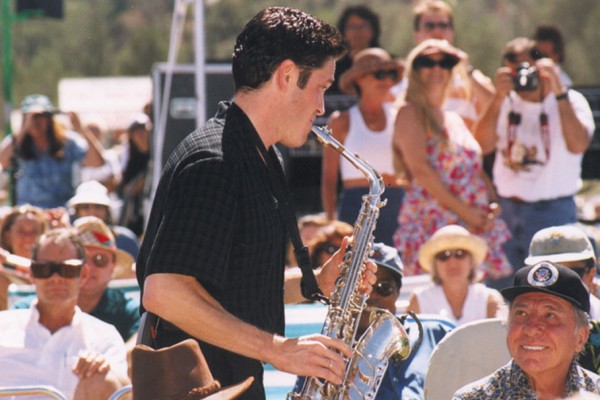Continued (page 2 of 3)
So, while we missed the window for [Telluride hits] Being Julia or Kinsey, we can go after what’s going to be released in the spring. We’re working with Miramax Films, with New Line Cinema, with Zeitgeist Films, we’re working directly with them now to try to get the great films that might be released two or three months after our festival, which we could either premiere, or be one of the first places in the U.S. to screen them.
Are there examples of these kinds of contacts paying off this year?
Showtime is bringing us a film that I saw at the St. Louis Festival called Sexual Life, with Steven Weber and Anne Heche, and I think our audience is going to love it. It’s incredibly creative, it’s incredibly provocative, it just hasn’t yet been picked up for nationwide distribution, and they’re trying to get out to as many festivals as they can. Now we, the Sedona International Film Festival, are on Showtime’s radar. And they know, ‘Hey, they want to show our film there, let’s send them some other ones.’
How about having distributors coming here to discover films they may want to work with?
We are e-mailing and in constant contact with all these distributors, not only to get their films but to let them know they’re invited to come to Sedona for that weekend. The more we can promote to get those [dealmakers] here, the better chance we have of putting our filmmakers in touch with people who are interested in their work. Those efforts are ongoing and constant.
One film we’re really proud of – we’re going to be the U.S. premiere, possibly the world premiere if they don’t get into the Berlin Film Festival – is Hate Crime, by Tommy Stovall, a local filmmaker here in Sedona. It’s remarkable, it blows away many of the films I’ve seen at the other festivals. It’s about a gay couple and one partner gets murdered. It’s an incredibly powerful film, and remarkable given that Tommy is a first-time filmmaker. For us, we feel it could really help put us on the map, because I’m quite confident this will get picked up for distribution. We’re expecting the whole cast to be here.
What about the audience experience?
We want to create a program that’s fun, so moviegoers come out saying, ‘I had the greatest time.’ There’s 28 blocs of films you can see at our festival, about 100 altogether. If you’re a cinephile, and you want to see all those films, you can do it, Thursday to Sunday. But no matter how many you pick, whether it’s six films or all of them, we want you to go away feeling that you got something you couldn’t get anywhere else.
Among the events, we’ve restructured the gala a little bit. Friday night will be a ‘Cast Party’ – a little more fun, a little more casual, rather than a black-tie affair. The ticket price will be lower, because we want to make it accessible for all of Sedona to be able to come and honor the filmmakers.
We’re also very proud of our new ticketing system, which is going to eliminate a lot of waiting in line. Depending on what ticket level you have, you can get tickets for all your films at once. Gone will be the mad dash to leave one film because you have to get in line to get your tickets for the next film, then come back hoping you didn’t miss much.
What about the Workshop panels?
The Workshop is going to be on directing. The main panel will be held at Red Rock High School on Friday. Zaki Gordon Institute will host Saturday breakout sessions.
How did the Festival survive the upheavals of the past year?
We were very blessed with a very supportive Board, because we came into this year horribly in debt. Our first challenge was to get on solid financial ground. We got a matching grant offer from them – the deal was, after I came in, that they would match the first $25,000 we were able to raise through sponsorships and donations. And they did. They sweetened the pot at the end of August. So we went from being a broke organization to being one of the most financially solvent overnight.



